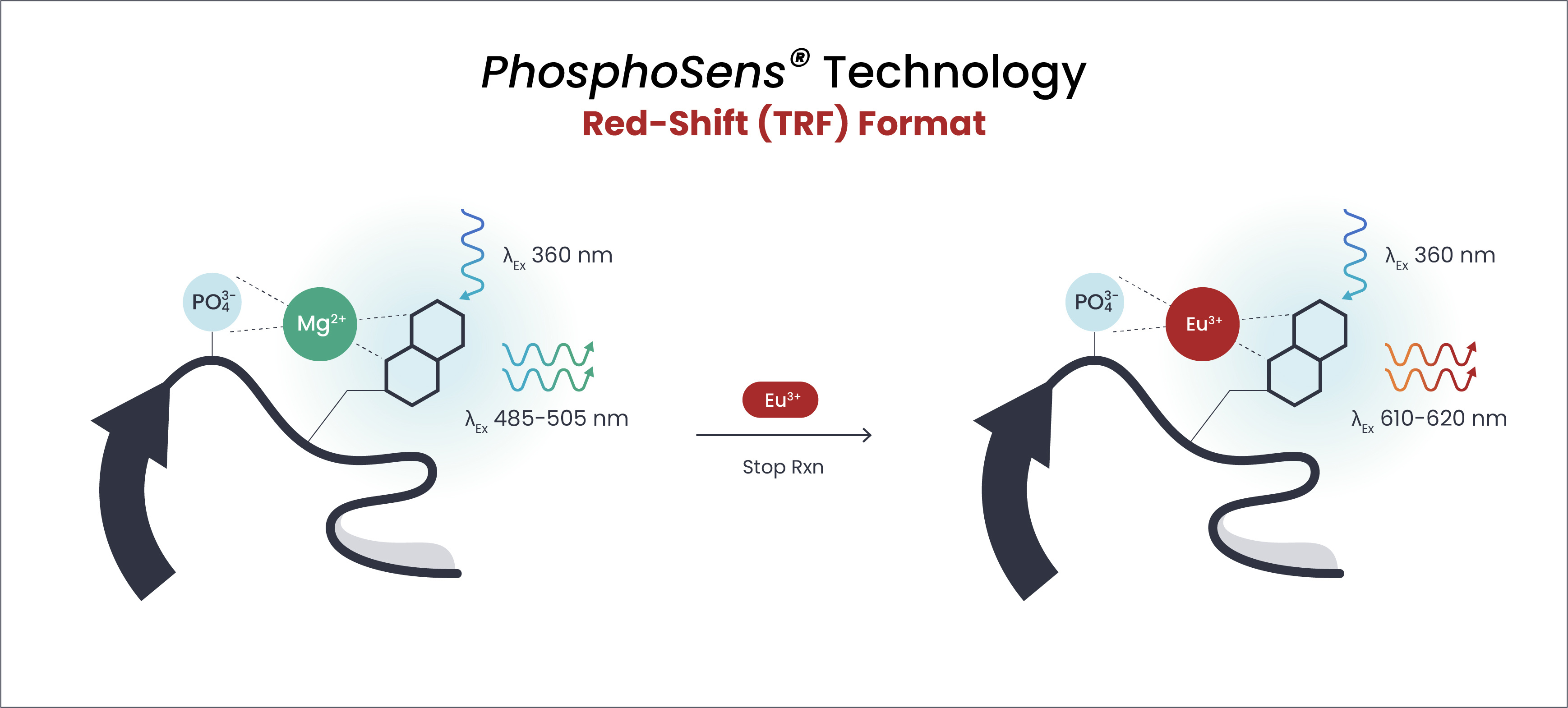Kinase & Phosphatase Assay Solutions
Enzyme and Inhibitor Activity Assays For Target Biology, Drug Discovery and Development, and Research
PhosphoSens® Technology: The Foundation of Our High-Performance Assays
AssayQuant’s patented PhosphoSens® Technology forms the basis of its extensive portfolio of over 700 unique enzyme and inhibitor assays.
Our Kinase and Phosphatase Substrates, built on this proprietary platform, are available in configurations tailored for various throughput requirements; from evaluating the technology through high-throughput screens.
Kinase Activity Assays
Quantify kinase activity and inhibition in real-time throughout the entire enzyme reaction at the substrate level in your lab with a simple add-and-read protocol - assays, substrates and supporting reagents available in multiple configurations.

Continuous, Kinetic Fluorescent Intensity (FI) Assays
PhosphoSens-Kinetic Assays: Capture real-time, kinetic data throughout the entire enzyme reaction at the substrate level, where the level of fluorescence is directly proportional to the amount of phosphorylated product.
Advantage: Continuous monitoring enables better characterization of reaction dynamics - ideal for studying enzyme inhibitors, activators, or drug effects - with higher accuracy and precision.

Endpoint Time-Resolved Fluorescence (TRF) Assays
PhosphoSens-Red Assays: Designed for highthoughput screening applications, capture a single fluorescence measurement without signal contamination, utilizing the same reaction conditions and set up as our Kinetic assays.
Advantage: TRF reads allow for clearer, more distinguishable signals, empowering researchers to conduct efficient, reliable, high-throughput kinase assays while retaining data quality and physiological relevance.
Didn’t find what you were looking for?
Stay Informed
Want to hear the latest about our technology? Be among the first to learn about our latest products and services.